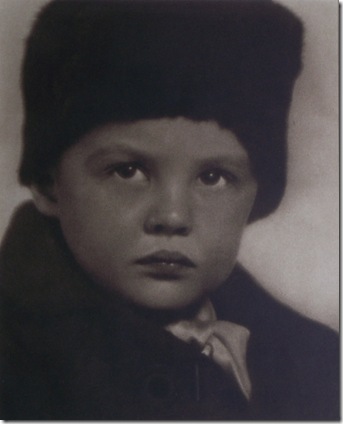
This post isn’t just about pediatrics, it’s about a practical problem. I don’t know the answer, so I need the help of my readers. That means you.
Phyllis, 88, is brought to the hospital, via the Emergency Room, acutely ill. No one at the hospital knows her personally, and the person can’t, for various reasons, help to identify who she designates as a decision-maker for her care. She is not able to help with this crucial information. Somebody in this circumstance is unlikely to be able to consent to certain aspects of their own care. If she is not competent to designate a surrogate, it’s hard to imagine her being competent to consent to a complex procedure.
Let me clarify some assumptions. The good people at the hospital don’t wait around for Phyllis's neer-do-well adult daughter (too close to home?) to call back from the spa before they perform CPR. They have established protocols for life-saving interventions. If you can’t tell them what you want, they will try to err on the side of keeping you going. It’s reasonable to assume, in my experience, that the strangers who work at the hospital--even the ones with poor bedside manners and weak social skills--don’t mean you any harm and want to help you the best way they know how. Yes, the courts can always appoint someone. But that could take days or weeks, and would you be happier with who gets assigned to you get that way?
Maybe you don’t think this applies to you, and maybe you’re right. Maybe you carry your living will or advanced healthcare directives, signed and notarized, next to your body everywhere you go. Maybe it’s a long (usually several typed pages) tattoo. But avoid it though we mostly do, any of us could be in this scenario. Certainly, our aging parents could be. And though I don’t like to bring it up, a child could be.
But I’m not asking about the immediate needs. If you need an IV, they give you an IV. But this is about the worst case scenario, not just a bad case. Does your mother want to undergo an agonizing series of procedures to provide a possible but not guaranteed few extra weeks? What about another round of chemotherapy when 4 awful previous trials didn’t help? What about life support--would she want mechanical breathing, external heart or kidneys? Under what circumstances yes or no?
I have written before about problems in medical ethics, and complained about ethicists who seem obsessed with these rare cases. But this is a purely practical question. I visit my mother every week—what would I want for her?
In the ethics discussion, I learned that this is pretty rare. Though many people don’t have advanced directives, most have some connections to family or others who can help. But several times a year, somebody like Phyllis is in the ER--very sick, not able to make her own decisions, not able to designate somebody to help with this serious decisions. There isn’t one right answer of who, under these circumstances, should get this responsibility for, in essence, a stranger. Who would you want? Who would you want for your parent (the one you like)? Who would you want for your child?
Here are some choices:
- The doctor on duty should do it. She or he is a pro and knows what’s best.
- A small committee of experienced care providers should make these decisions. The group would consist of a doctor, nurse, social worker.
- A diverse committee should make these decisions. This group has care providers like a doctor, nurse, and social worker, but would also include a layperson from the community, maybe a religious leader from the community.
- A group of people with ethics experience who are extra careful not to impose their own biases onto this stranger.
- It’s important that the people on the case NOT be directly involved in my care. That way, they won’t push their own departments or pet procedures. Maybe they will have a little better overall perspective on the risks and benefits of interventions.
- Regular community doctors should be involved, since they have the most personal connections to patients facing these serious decisions.
- Specialist physicians should be involved, such as intensive-care specialists or surgeons, since they have the most expert knowledge of the interventions that might be decided upon.
- Doctors shouldn’t be involved. Consulted for their expertise, but I’d prefer regular people like me to make decisions for me.
The hospital should assign somebody, or a small group of people, to look out for me during my whole stay. That way, this person or group would get to know my case and have a consistent approach.
Here’s how most hospitals handle this, by the way. They make up a rule. Sometimes their Ethics Committee makes up a rule, sometimes some other group or executive. Then everybody follows the rule. As far as I know (granted, not that far) nobody actually asks potential patients. That’s you. DO THE SURVEY! It’s short.
For the record, I don’t know the answer to this problem. This is one of the scenarios, by the way, that seem complex and subtle to my adult-medicine colleagues. Yet every child is this patient—not able to give consent, not able to designate somebody. We think of children as part of a package, which includes a family or caretaking adult. What happens when only the child part of the package shows up? Please help me figure this out and DO THE SURVEY.
The photo above, from my collection, is by Helen Levitt from 1942. I think it’s really funny, and is thus appropriate as therapeutic relief for this blog post.



 These 3 things were in wide use by the 1950’s. Prior to this, however, and for many centuries, hospitals were built at the top of the local hill. There were several practical reasons for this. The sick were kept away from town. There was generally good through-ventilation, from big windows facing different directions. This was important because, in the days before the idea that germs caused disease, the breeze would disperse the contagious miasmas that carried sickness. And the drainage, often infectious, was good. Though many or most women gave birth at home, a lot of newborns, especially the sick ones, had stays in the maternity ward. The babies were often put together (we’ve all seen this in old movies--an expectant father looking through a viewing window trying to find his own in a cluster of newborns). Long before modern medicine, it was noticed that the babies near the aisle were generally more jaundiced than the babies near the windows. If where you live was developed before 1900, as in New England (or old England for that matter), think about where the old hospital building was or is. On a hill, right?
These 3 things were in wide use by the 1950’s. Prior to this, however, and for many centuries, hospitals were built at the top of the local hill. There were several practical reasons for this. The sick were kept away from town. There was generally good through-ventilation, from big windows facing different directions. This was important because, in the days before the idea that germs caused disease, the breeze would disperse the contagious miasmas that carried sickness. And the drainage, often infectious, was good. Though many or most women gave birth at home, a lot of newborns, especially the sick ones, had stays in the maternity ward. The babies were often put together (we’ve all seen this in old movies--an expectant father looking through a viewing window trying to find his own in a cluster of newborns). Long before modern medicine, it was noticed that the babies near the aisle were generally more jaundiced than the babies near the windows. If where you live was developed before 1900, as in New England (or old England for that matter), think about where the old hospital building was or is. On a hill, right?
 If the baby needs phototherapy, it’s often safer and more dependable to get the baby under lights that are specifically engineered to be effective and safe.
If the baby needs phototherapy, it’s often safer and more dependable to get the baby under lights that are specifically engineered to be effective and safe.





 It was very strong medicine! Just one drop is all you need! Adverse side effects could include blue hands, blue splotches on clothes.
It was very strong medicine! Just one drop is all you need! Adverse side effects could include blue hands, blue splotches on clothes. 




